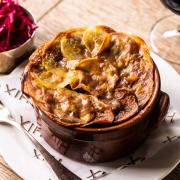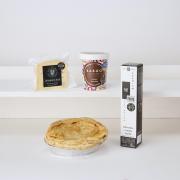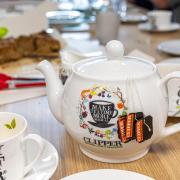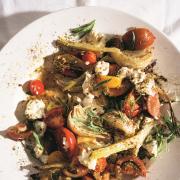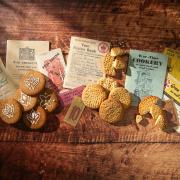With the clocks going back at the end of this month, now is the time to ponder ways of filling those long winter nights, baking springs to mind. But set aside those cake tins and biscuit cutters, I’m thinking about proper home baked bread. Shop bought bread is high on the Ultra Processed Foods (UPF) list. Though bread without additives takes time to make and bake, it is easily managed by the home baker and an ordinary domestic oven. And who doesn’t love the aroma of freshly baked bread drifting through the house?
Bread needs just four ingredients – flour, salt, yeast and tap water. Start with a basic white bloomer. When you have practiced a bit, you will discover that the world of bread is infinitely more variable than cake – from basic to savoury, and sweet to filled and flavoured. If you don’t feel confident, or would like to expand your skills, there are some wonderful bread courses you can do in Dorset, these include Pannary at Cann Mill near Shaftesbury, a working watermill (panary.co.uk), and Oxfords Bakery based at a former Victorian bake house in Alweston (oxfordsbakery.co.uk). To help you on your way to becoming a competent bread maker...here is my recipe for a basic white loaf. Just for fun I baked mine in a very well-lined terracotta flowerpot, as you can see!

Always buy the best flour you can afford; you need strong flour because it is higher in gluten which gives the bread texture and structure. Dried easy bake yeast is fine for this recipe. Use sea salt flakes, as fine table salt has many of the natural ingredients removed and it has an anti-caking agent.
500g strong white bread flour
10g dried ‘easy bake’ yeast
10g sea salt flakes
350g tap water at room temperature
Method
1. Put the flour into a large bowl, add the salt to one side and yeast to the other.
2. Mix together either using a plastic scraper or a large spoon, then add the water. Mix it thoroughly with a scraper making sure you pull up every bit of flour until you have a rough dough. Note: I weigh my water (1g = 1ml), as you get better at ‘reading the dough’ you may wish to add a little more water depending on how much is absorbed by the flour but 350mls is a good starting point. A little too much is better than too little.
3. Turn the dough out onto your kitchen worktop but do not add any extra flour to the surface. The dough will be sticky but as you work/knead it, the flour absorbs the water and becomes less sticky. There are two basic methods of kneading: one where you pound the dough with your hands, the other is lifting and slapping it down on the work surface - they both have the same result. Kneading is important as this is how you develop the gluten so that the finished loaf has a good structure. The longer you knead, the better the bread will be – so brace yourself for a 10-minute workout – don’t be tempted to cut it short. At the end of this, the dough should be smooth and silky and in need of a rest. You could eliminate all this by using a mixer with a dough hook, but learning to ‘feel’ the dough is important.
4. Very lightly dust a large bowl with flour, pop the dough into it and cover with a clean tea towel. The dough needs a minimum of 2 to 3 hours to ‘prove’ and increase in size two-fold. You can leave it all day or all night in a cool place to prove – either a cold larder or fridge - and it will be even better
5. When it has proved, remove from the bowl to your work surface, gently knead again for a few minutes. Then shape it into a loaf. Place on a baking tray and cover again to prove for about an hour.
6. Preheat your oven to 220°C fan/240°C/gas mark 9. Bake your loaf for about 30 minutes until the top is brown and crusty. Remove to a cooling tray, resist eating it until it is really cool.




